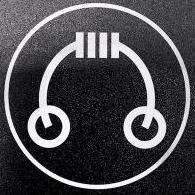Leaderboard
Popular Content
Showing content with the highest reputation on 05/23/2015 in Posts
-
4 points
-
Repairman came, took 5 minutes (maybe less) to diagnose the problem. Fried motherboard. Luckily he's a local, knows the lady that runs the parts shop and is willing to install a new one for 30% of the cost of the fridge, which seems reasonable. He just has to go pick it up, run some errands and then he'll be back. He also told me that occasionally you can simply resolder the fried connection at the undersized relay that cooked itself and get the fridge running again for short periods of time. So after he left I took the board to the office, solder the bad spot and reinstalled it. Viola! The fridge is running again. So hopefully this will allow me to save the food inside the fridge. The stuff in the freezer is already screwed and thankfully, doesn't amount to much.4 points
-
Went sailing on a dinghy for the first time in 5 years. Getting to share sailing with my son was awesome.4 points
-
I don't often link to head-fi but this is a special day: http://www.head-fi.org/t/439657/headamp-blue-hawaii-special-edition/7155#post_11627945 Next stop is getting a proper voltmeter (isn't it?) and starting to go through the stash of XF2 / XF4s I have accumulated while waiting for the amp... cheers, arnaud2 points
-
2 points
-
1 point
-
Yeah, as the hours go by and the guy continues to no-show on the follow up I'm increasingly glad that I got it working again. I'll probably call shortly and tell him not to bother and just order the board from Amazon and do the repair myself. And at least I have ice for my drink later...1 point
-
The computer stole 5 miles from me! Should have know the chart in the manual was not accurate....1 point
-
Unfortunately, I am not a baller like you, so I am only looking for economy cars at this point, really just wanted to see how it compared to my 2002. That dealership did have a nice lease offer for a convertible M235i for $499 that was interesting.1 point
-
1 point
-
1 point
-
1 point
-
Awesome, Chris!! Me - woke up to a fridge that isn't cool and a freezing that is decidedly unfrozen. Repairman inbound and I'm just hopeful it can be repaired since it's only 5yrs old or so.1 point
-
Excellent Chris! My first time in a sailboat is a memory I'll never forget!1 point
-
1 point
-
1 point
-
1 point
-
1 point
-
1 point
-
Drove quite a nice Harman Kardon sound system today with a 425hp convertible attached. Can I get a "dew eet"?1 point
-
Let’s look at the input stage in more detail – I don’t feel too guilty about putting this here since this discussion is more detailed (and longer) than the AudioXpress article – word count limitations and all that. As originally designed by Stax, it is a long-tailed cross-coupled cascode phase inverter with the right tube grid grounded. This can easily be converted to a balanced differential stage by un-grounding the right tube grid and using it for the negative input of a balanced signal. Unfortunately, if we put a signal into the left tube gird with the right tube grid grounded, we don’t get a completely balanced signal coming out. There are a number of things that can be done to improve the output balance. First, the higher the gain of the section, the closer we can get to a balanced output. A cascode has a high gain, so that helps. Second, the cross-coupling between the plate of the lower tube and the grid of the upper tube improves the balance, as explained by D.R. Birt. He describes it in an article in the June 1960 issue of Wireless World. He notes that this cross-coupling does not alter the overall gain of the cascode, thus for purposes of calculating the gain, one can neglect the cross-coupling and use a simple cascode gain calculator. In addition, since each upper tube section is being driven by both lower tube sections, the resulting push-pull action should help cancel out any even order distortion generated in the lower tubes – and the 12AT7 in particular has a significant amount of second order distortion. Third, the higher the value of the cathode resistor, the better the AC balance, thus, replacing the cathode resistor with a current sink improves the output balance. A simplified way of looking at it is, if a signal electron travels down the left input tube, when it hits the current sink (which ideally is an infinite AC resistance) it bounces over into the right input tube where it travels up. Not only is balance improved but this maximizes the fidelity of signal transmission between the two sides of the phase splitter. With an ideal current sink at the cathodes, the imbalance is approximately 1/(stage gain). With cascoded 12AT7 tubes, the stage gain is over 100, so the imbalance is less than 1%, which approaches the degree of balance using matched resistors, and significantly exceeds our ability to match tube sections – not to mention the ability to keep them matched as they age. Finally, the balance pot between the two cathodes helps static balance by allowing the output plates to be adjusted to sit at the same voltage. The capacitors connecting the cathodes bypass the pot at audio frequencies, preventing the adjustment from altering the gain from one side versus the other. Really quite a sophisticated design for something that appears so simple. Now, what are the advantages and disadvantages of this circuit? The advantages are simplicity with high gain and good output balance. There are two disadvantages, however. First, in order to achieve high gain, the output resistors are high impedance, which means that the current running through the circuit is low, so the current drive to the output stage is puny. For 300 kilohm plate resistors and +/-325 volt power supply, each tube has less than 0.55 mA current available to drive the Miller capacitance of the output stage. We will discuss Miller capacitance further in the next paragraph. Second, a cascode has a high output impedance, roughly equal to the value of the output resistor(s). Now, remember that, in AC terms, the output resistance comprises not only the plate resistor, but also the grid resistor in the following stage, which is in parallel with the plate resistor. With 300 kilohm plate resistor, 500 kilohm output grid resistor, and the output tube resistance, the output impedance of the circuit is about 173 kilohms on each side. This high output resistance is driving the output stage, which has a Miller capacitance equal to (μ+1)*(grid to plate capacitance), where μ = the gain of the output stage. For a 6SN7GTA output tube, the grid to plate capacitance is approximately 4 pf and μ = 20, for a triode-connected EL34, the grid to plate capacitance is approximately 10 pf and μ = 11, so the Miller capacitance is approximate 84 pf for a 6SN7GTA and 120 pf for a triode connected El34. Note that the Miller capacitance of the output tubes is the same order of magnitude as a set of electrostatic headphones. However, since the output tubes also produce gain, the amount of current needed to drive them is proportionately less than the current needed to drive the headphones. On the other hand, with the high output impedance of our input stage, this means that the open loop frequency response is -3 dB at 11 kHz for a 6SN7GTA output tube and -3 dB at 8 kHz for a triode-connected EL34. This circuit NEEDS overall feedback to achieve a flat frequency response over the entire audio band. That means for the entire circuit to get to 20 kHz closed loop without rolling off, it needs 6 dB open loop gain over closed loop gain with a 6SN7GTA, and 9 dB open loop gain over closed loop gain with an EL34. Now, before you throw up all over your shoes because of this crappy open loop frequency response, let me point out that the Dynaco Stereo 70, a class B Stereophile recommended amplifier back in the good old days of the late J. Gordon Holt, has an open loop frequency response that is -3 dB at around 7 kHz. Yep, 7 kHz. Still sounds pretty good. Anyway, we have two good reasons to want the input stage gain to be high: first, it maximizes the balance from an unbalanced signal going into the balanced output stage, and second, it provides the extra open loop gain needed to flatten the frequency response up to and beyond 20 kHz. Incidentally, in a cascode, the lower tube is the major determinant of the gain, however the upper tube does most of the voltage swing. Some people think a cascode is a two stage design with the lower tube as the “input” and the upper tube as the “driver.” However, in a cascode, the same signal current runs through both stages. In the usual two stage input/driver design, the input stage performs much of the voltage gain and runs at a low current, while the driver stage generally runs a higher current to “drive” the output stage. Thus, it makes no sense to use a high current tube as the upper tube of a cascode, if the circuit as a whole is running at a low current, as is the case here. Using a high current tube, say a 6BX7, as the upper cascode tube in this circuit just means that you are running it at a trickle current where it is non-linear. You may like the sound of distortion, but it is by definition malfunctioning. As a general rule, a well designed tube circuit is optimized for the tubes that are used in it. The notion that any tube that you can jam into the sockets with or without the use of a socket adapter is just hunky dory (aka tube rolling) as long as no smoke or sparks occur is, to put it bluntly, stupid, unless you like the sound of a malfunctioning, high distortion circuit if you use the wrong tube. In light of this, let us consider some candidate input tubes. Stax used 12AT7s for both input tubes in the cascode. The calculated gain using these is around 42-44 dB, depending on what parameters you use. The 12AX7 and 6SL7 do approximately as well, yielding calculated gains of around 41-43 dB. On the other hand, using 6SN7s gives a calculated gain of around 37-41 dB. These numbers don’t seem to be that much different, however remember that 3 dB represents a 41% increase in voltage gain. Also, it is important to note that the 12AX7 and 6SL7 are designed to be linear at low currents, whereas the 6SN7 tube really wants to have about 10 times as much current to be in its linear range. So using a 6SN7 in this circuit produces a non-linear result with reduced gain - like I said, a malfunctioning circuit. So for best results, the input circuit should use 12AT7 tubes, which is what it was designed for, with the 12AX7 or 6SL7 as possible acceptable substitutes. Now, as I mentioned before, since the upper tube in the cascode does most of the voltage swing, it is not unreasonable to have the 12AT7 as the lower tube, which determines the gain, and a 12AX7, 6SL7 or 5751 (roughly a miniature equivalent of the 6SL7) as the upper tube as they are designed for linear voltage operation at low currents. I confess I have not tried this as I much prefer listening to music to listening to different tubes.1 point











